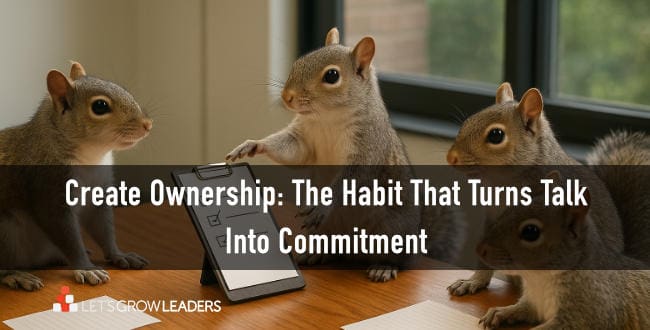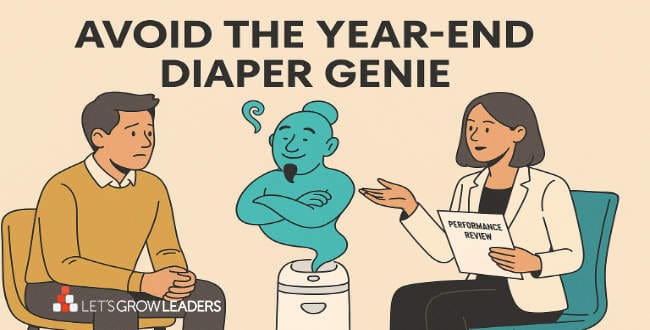A Manager’s Guide to Reinforcing Training When People Get Back to Work
Your employees attend a leadership training program. They come back fired up and excited about what they’ve learned and what they can do with it. But, there’s been no training reinforcement, and two weeks later they’re back to their old habits.
Now, all those behaviors that worked well in the role-plays are a distant memory.
What happened?
Assuming you’ve picked the right training and avoided these big mistakes if the learning doesn’t stick, you might need to work on your reinforcement strategy.
Training Reinforcement: 6 Ways Managers Can Inspire Learning and Application
1. Know Before They Go
An important starting point for learning reinforcement happens even before your first training session.
Be sure you know exactly what your employees are there to learn. If you can’t articulate what your employees will know or do differently, don’t waste their time until you’re sure. Ask HR or your training partner for specific learning outcomes.
In our leadership programs, we share a roadmap of learning outcomes to support learning reinforcement with both participants and their managers. Participants do a “before” self-assessment so they can quickly identify priority focus areas and prioritize and their individualized learning goals.
2. Connect What to Why
Now, it’s time to ensure that your people know how the training will help them. It’s tragic to see a room full of employees shuffle in with no clue why they are there.
We recently asked participants what they hoped to get from the courageous cultures leadership program. Most of the managers were enthusiastic in their responses.
“I want to create an environment of better psychological safety on my team.”
“To help my team think more critically.”
“I want to draw out ideas and best practices from my team.”
And then one participant said, “I don’t know. My boss signed me up and told me to come.”
3. Define Success
Set measurable objectives for your employees. For example:
- “I expect this training should help you close an additional five deals per month.”
- “We will measure the effectiveness of this leadership training in your Great Place to Work survey scores and attrition rates.”
- “Our goal is to achieve 100% on-time delivery with the techniques you’ll receive in this course.”
4. Each One Teach One
Here’s your chance for a BOGO (buy one get one free) as part of your learning reinforcement strategy.
Ask your returning trainee to teach one concept they’ve learned to the rest of the team. If the team went together, have everyone share their favorite technique and how they’ve applied it.
You’ll leverage the investment, reinforce the training, and spread the best practices.
A few “each one teach one” learning reinforcement best practices.
Senior leaders as role models.
We recently had one CEO who worked through the entire leadership program with all his managers. He then created a video describing his biggest takeaways from the program. He then reinforced how critical it is that the managers who had gone through the program to teach, and even more importantly, model the tools and techniques to others.
“The leadership techniques we are learning here are becoming a critical part of our culture. It’s now up to us to teach what we’ve learned and help others to grow.”
Challenger Groups
We’ve had remarkable success in our long-term leadership training programs with a learning reinforcement strategy we call “challenger groups.”
We start with executive leadership development to provide advanced training on the core concepts the other managers will be learning, as well as some grounding in training reinforcement facilitation skills.
Then, the senior leaders attend the spaced learning over time along with participants in mixed cohorts (from different departments). Then each senior leader is assigned a challenger group (of people who don’t normally report to them) to reinforce the learning and discuss how they are applying it.
We support the senior leaders in facilitating these challenger groups with monthly mastermind sessions and leader’s guides.
This challenger group learning reinforcement approach is the fastest way to ensure your learning becomes deeply embedded in your  culture. There’s no faster way to learn than to teach.
culture. There’s no faster way to learn than to teach.
5. Ask for feedback
Great training gets better with good feedback. Ask for candid feedback on what was most helpful and ways to improve it. Use the feedback to make the next time better.
In our leadership training programs, we incorporate a cadence of check-ins in our learning lab to ensure we understand how the training is being applied and what additional support.
A popular learning lab session is our “Asking For a Friend” rapid-fire Q&A. We invite participants to share their most challenging leadership questions anonymously and offer our best thinking along with additional readings, tools, and related resources.
6. Schedule a Review of Results
As the training concludes, schedule a training reinforcement meeting 4 to 6 weeks out with the employees who attended. The agenda for the meeting will be for them to show how they implemented a key concept, behavior, or results they achieved.
Operational Excellence Rallies
One best practice is to schedule what we call an “operational excellence rally” six months following the training.
For example, the one we’re planning now with one of our clients includes:
- Highly interactive reinforcement training workshops on advanced applications for key concepts (co-facilitated by us and one of the company executives)
- Panel discussions where senior leaders and managers share best practices and lessons learned
- Strategic storytelling and 5×5 communication of why these approaches matter and how they impact results.
- A “fishbowl” competition to reinforce critical thinking and problem-solving skills and to generate strategic solutions to real business challenges.
Your turn. What are your favorite techniques to reinforce training and ensure concepts stick.







0 Comments